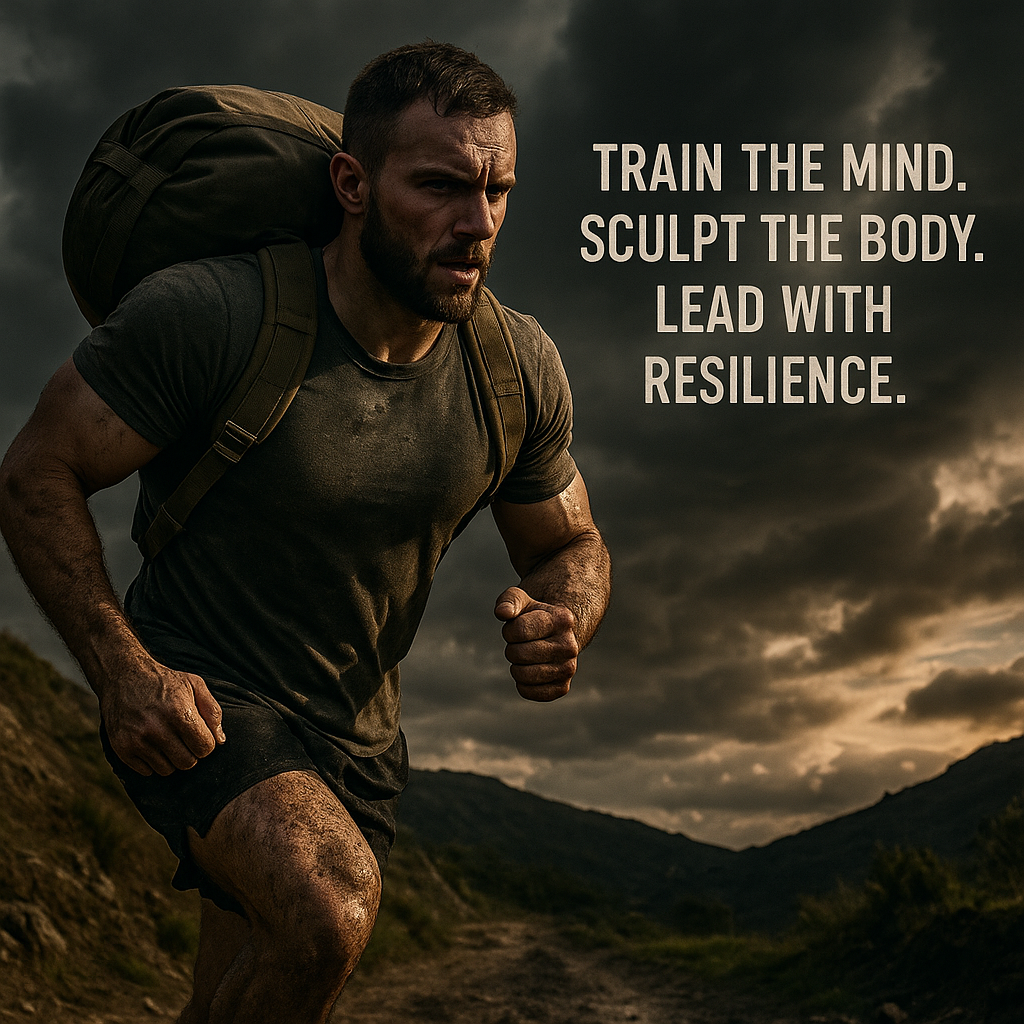Fitness for Resilience: 10 Brutal Challenges to Build an Unbreakable Mind

Greetings! I’m Gregg Swanson, a coach who believes in the balance between grit and grace. From scaling mountains to diving into the depths of shamanism, my journey has shaped a unique approach to success.
Let’s explore how you can tap into your inner power and thrive by looking at fitness for resilience.
Break the Mental Wall: Why Fitness Must Go Beyond the Physical
Most workouts train your body… but what if the real transformation starts in your mind?
You’re strong. Maybe even shredded. But when life throws chaos your way, how often do your biceps help you respond with calm, focus, and courage?
That’s the trap of conventional fitness. It builds muscle but not always resilience. And in high-stress moments…in business, relationships, and leadership…that gap becomes obvious.
Enter fitness for resilience: where your training becomes a forge for mental toughness, emotional control, and relentless grit.
This isn’t about six-packs. It’s about self-mastery.
In this playbook, you’ll discover 10 powerful fitness for resilience challenges designed to strengthen your mental edge, even when motivation crumbles. Each one is crafted to push past comfort, activate your nervous system, and rewire how you respond under pressure.
Let’s dive in.
Fitness for Resilience: The Hidden Science Behind the Sweat
Your body and brain don’t operate in silos. When you challenge your physiology, you train your psychology.
- Stress Exposure Training: Intentionally facing discomfort (cold, fatigue, lactic acid) builds your brain’s tolerance to stress.
- Neurochemical Recalibration: High-intensity challenges reset dopamine and cortisol cycles, enhancing mood regulation and focus.
- Prefrontal Activation: Mental resilience lives in the prefrontal cortex…and it lights up when you train under tension.
Fitness for resilience turns every rep, sprint, and sweat session into a neurobiological upgrade.
Most people avoid discomfort. But those who seek it deliberately…and train their response to it…develop an almost unfair advantage in life.
Let’s explore 10 challenges that do exactly that.
The Top 10 Fitness Challenges to Cultivate Resilience
- Cold Exposure + Breath-Hold Walks
- Mental Edge: Trains panic control and sharpens breath awareness.
- Protocol: Take a 3-minute cold shower, then perform a slow 50-step walk holding your breath after exhale.
- Benefit: Enhances CO2 tolerance and stress recovery.
- Why it works for fitness for resilience: It trains the body to stay calm under shock and stress.
- Weighted Sled Drags (on incline if possible)
- Mental Edge: Builds grind-over-glory endurance.
- Protocol: Load a sled at moderate weight and drag uphill or across a field for 20–30 meters per round.
- Benefit: Forces you to move forward under pressure. No bounce. Just brute commitment.
- Fitness for resilience angle: Sled drags mirror life’s relentless demands, teaching you to push without drama.
- HIIT with Breath Restriction
- Mental Edge: Simulates fatigue-induced decision making.
- Protocol: Perform sprints or burpees while nose-breathing only or using a training mask.
- Benefit: Builds CO2 tolerance and calm under duress.
- Use in fitness for resilience: This challenge increases your threshold for chaos while keeping your focus intact.
- WODs with Mental Anchors
- Mental Edge: Combines physical intensity with cognitive anchoring.
- Protocol: Pick a CrossFit-style workout and link each round or rep scheme with a mental mantra (e.g., “I adapt” or “I own the moment”).
- Benefit: Embeds mindset triggers into movement.
- Fitness for resilience value: Reinforces psychological stability during high output.
- Silence Runs (No Music, No Tech)
- Mental Edge: Strengthens focus and internal dialogue.
- Protocol: Run 2–4 miles without headphones or distractions.
- Benefit: Develops mental discipline, attention control, and emotional regulation.
- Why it matters in fitness for resilience: It removes crutches and amplifies your inner voice.
- Rucking with Reflection
- Mental Edge: Builds slow endurance with introspective focus.
- Protocol: Carry 20–50lbs for 45–90 minutes on varied terrain. Reflect post-hike with a journal prompt like, “What did I resist today?”
- Benefit: Blends physical challenge with psychological insight.
- Fitness for resilience role: Pairs physical fatigue with mental clarity.
- Sandbag Carries (Long Distance)
- Mental Edge: Builds grip, grind, and go-forward focus.
- Protocol: Walk 400 meters carrying a 60–100 lb sandbag. Rest, repeat.
- Benefit: Trains perseverance with no glamor.
- Key to fitness for resilience: Forces you to carry the weight… just like in life.
- Obstacle Course Training (Spartan/OCR Style)
- Mental Edge: Simulates chaos under fatigue.
- Protocol: Train for or compete in a course that includes climbing, crawling, jumping, and running.
- Benefit: Builds adaptability and mental flexibility under stress.
- Use for fitness for resilience: Master navigating unexpected variables and mental resets.
- 24-Hour Fitness Fast
- Mental Edge: Trains impulse control and energetic resilience.
- Protocol: Commit to 24 hours of movement (light to moderate) without food. Hydration only.
- Benefit: Activates survival grit and redefines perceived limits.
- Fitness for resilience perspective: Challenges your inner narrative about hunger, depletion, and will.
- The 1000 Rep Mind-Breaker
- Mental Edge: Total endurance and mental override.
- Protocol: Choose 5–10 bodyweight movements (e.g., pushups, air squats) and complete 1000 total reps.
- Benefit: Breaks mental ceilings and forces presence.
- Why it defines fitness for resilience: Only mental power gets you through the final 200 reps.
Traditional Fitness vs. Resilience-Based Fitness
| Category | Traditional Fitness | Resilience-Based Fitness |
| Goal | Aesthetics, strength, or endurance | Mental toughness, emotional endurance |
| Primary Focus | Muscle hypertrophy and calorie burn | Stress exposure and mindset conditioning |
| Emotional Impact | Pride, motivation, external validation | Grit, self-trust, emotional regulation |
| Mindset Triggered | Discipline, willpower | Adaptability, inner strength |
| Feedback Loop | Progress tracked by physical metrics (e.g., weight, reps) | Resilience measured by challenge tolerance & recovery speed |
| Training Style | Routine-based, progressive overload | Challenge-based, mindset-focused |
| Long-Term Benefit | Physical transformation | Inner fortitude and life application |
How to Implement: Weekly Framework
Create your own fitness for resilience week. Here’s how to plug these challenges into your schedule:
| Level | Day 1 | Day 3 | Day 5 |
| Novice | Cold Exposure + HIIT | Silence Run | Sandbag Carry |
| Experienced | Weighted Sled + WOD | Breath-Hold Walk + Ruck | Obstacle Course + Fast |
| Savage Mode | 24-Hour Fast + Mind-Breaker | Hill Sprint Masked HIIT | Cold Shower + 1000 Reps |
Consistency is king… but challenge is emperor. Keep rotating to keep the mind guessing.
Mistakes to Avoid
1.) Relying on Willpower Alone
Instead, build systems and rituals. Warrior strength lives in routine.
2.) Seeking Comfort After Every Challenge
Resilience is forged when you stay in the discomfort a little longer.
3.) Overtraining Without Integration
Recovery is where adaptation lives. Use journaling, reflection, or coaching to harvest the lesson.
4.) Comparing Outcomes
Fitness for resilience is about your inner evolution…not someone else’s PR.
Advanced Strategies for Mental Layering
Stack your mindset like your muscle. Here’s how:
1.) Anchoring: Use touch, breath, or phrases to lock in empowered states mid-challenge.
2.) Visualization: Mentally rehearse the pain point before you get there.
3.) Mantra Reps: Pair each rep with a phrase (e.g., “I rise” or “I stay calm”).
4.) Breath Control: Box breathing or 4-7-8 breathing post-challenge accelerates integration.
This is how elite performers turn sweat into strength…and fitness for resilience into a lifestyle.
Call to Action: Book Your Mental Edge Breakthrough Session
Fitness for resilience isn’t a trend. It’s the hidden edge of high-performers. When your mind gets stronger, everything changes…your performance, your peace, your potential.
If you’re ready to design a challenge-based program that strengthens your body and your mindset, book your Mental Edge Breakthrough Session today.
Step into the arena. The warrior is already in you.
Q&A: Fitness for Resilience
Q: What is the best fitness for resilience challenge for beginners?
A: Start with cold exposure and breath-hold walks. They’re accessible and powerful for nervous system training.
Q: Is pushing to failure good for building mental strength?
A: Yes, when intentional. Strategic overload trains the brain to stay calm under pressure.
Q: How often should I do fitness for resilience challenges?
A: 2–3 times a week is optimal. Recovery and integration are just as important.
Q: Does silence in training really help?
A: Absolutely. Removing distractions enhances focus and self-dialogue…key tools for resilience.
Q: Can I combine fitness for resilience with my current training?
A: Yes. Plug them in as standalones or layer them over your existing program for mindset enhancement.
Train the mind. Sculpt the body. Lead your life with fitness for resilience.



